Bereavement Support Company | EOT
Award-winning bereavement support company transitions to an Employee Ownership Trust

Selling all or part of a business is often a once in a lifetime decision for a business owner. You need to get it right. Careful consideration of the options and making an informed decision are critical, as the choices made today will carry financial implications far into the future for the shareholders and, potentially, the company.
The client
The controlling shareholder of our client established the business in 1990 to provide will preparation and probate services. Over the years, the company expanded the services it provides where today it is positioned as a bereavement services provider also offering lasting power of attorney, asset protection and advance funeral planning in addition to its core offerings.
This case study focuses on the sale of the business to an Employee Ownership Trust (EOT) and explains the benefits of and special considerations for this type of transaction. In planning an exit strategy, the shareholders reviewed the options below from a succession and transition planning perspective:
1. Selling to a strategic buyer
This option often yields the highest pre-tax proceeds as strategic buyers are willing to pay more, knowing that they will be able to create savings in the future via consolidation and associated synergies. Following this path, however, increases the risk to the business from competitors simply “fishing” and synergies generally result in significant job loss.
2. Selling to a financial buyer
This option typically yields a Fair Market Value (FMV) price for the company. As most financial buyers flip businesses fairly quickly to strategic buyers, the risks of job loss, damage to seller’s legacy and integration risk, while delayed, persist.
3. Selling to employees via an Employee Ownership Trust (EOT)
Because EOT transactions can be done at fair market value, buyers give up little, if any, value in selling to the employees. They can often maximise their net proceeds with an EOT sale due to the tax benefits available. As there is no outside buyer, execution risk is minimised, the management team remains in place and competitive risk is low. EOT transactions can be complex, so it is important to retain advisers with substantial EOT experience.
Each strategy carries its own benefits and risks, and it is up to the business owner to evaluate which risks are acceptable and which are not. This case study focuses on the third option, a sale to an Employee Ownership Trust, and how our client used an EOT to achieve the shareholders’ objectives.
The EOT
At its core, an Employee Ownership Trust is a specialised form of the well-established Employee Benefit Trust (EBT). EOTs were established in the Finance Act 2014 as a means of promoting increased employee ownership through targeted tax benefits for both business owners and their employees.
Numerous studies in both the UK and United States have documented the benefit of employee ownership on company performance, but the EOT is the first vehicle in the UK to provide shareholders with an incentive to sell control of their business to their employees through full Capital Gains Tax (CGT) relief upon the sale of a controlling interest in the business.
There are specific requirements to be met to obtain the CGT relief, but the primary requirement is the sale of more than 50%. Owners can sell part or all of their shares to the EOT at a price up to fair market value. FMV is usually determined through negotiation with the trustee, who represents the interests of the employee beneficiaries of the plan, and supported by a valuation. Best practices for these types of transactions call for an independent third party valuation opinion addressed to the trustee specifying that it is not paying more than FMV for the shares.
The value of the shares in the trust is directly related to the performance of the company, creating an effective incentive for management and employees to perform well. The tax benefits that EOTs can provide both the selling shareholders and employees are meaningful and are covered in greater detail later in this document.
Transaction considerations
Prior to the sale of 100% of the company’s shares to an EOT, there were seven shareholders, with four active in the business, one running his own business providing complementary services to those provided by our client and two who were retired and living outside of the UK. The company had been approached several times by both competitors interesting in buying the business and private equity interested in investing in the company. As the controlling shareholder discussed options with his fellow owners, it was readily apparent that there was a strong interest in keeping the company independent and preserving what they had all worked long and hard to build.
The first decision point for the shareholders was whether to raise any outside capital. After reviewing the options, they elected to finance the sale through vendor loans, but on terms that would be representative of commercial financing terms. The vendor loans were structured with senior and junior tranches. The senior debt leverage was 3.0X EBITDA, with the junior debt comprising the remainder of the purchase price. As the senior debt was repaid, the junior debt was “refinanced” by reloading the senior debt and restructuring the repayment schedule. This structure allows the business to pay off the transaction related debt in slightly more than ten years, while not having a negative impact on the business. The capital structure maintained the relationship between senior and junior debt that you would expect to see on commercial terms with respect to leverage, pricing and security.
Complicating the structure further was the number of desired outcomes from the transaction. Due to the different circumstances the shareholders were in, they all had different objectives for the transaction. The biggest complicating factor was the varying level of income each shareholder desired over the years following completion.
The shareholders were flexible in how their vendor loans were structured, which allowed us to meet their objectives through various combinations of senior and junior vendor loans, as well as cash pay versus accrual interest. We used accrual interest rather than Payment-in-Kind (“PIK”) interest to avoid creating phantom income for the shareholders.
Following initial diligence work, we prepared a feasibility analysis showing the owners how a transaction could potentially be structured to meet their needs. As we received feedback from the shareholders, we went through a number of iterations of the structure until we had one that worked for everyone and allowed the EOT (through company contributions) to comfortably service the debt incurred to purchase the shares.
Existing debt needs to be factored into the overall financing structure and available leverage when implementing an EOT. Total debt must remain at commercial levels to maximise financing flexibility going forward.
If the seller chooses to finance all or part of the transaction through vendor loans, he or she may receive equity warrants for a significant part of the company going forward. This is consistent with commercial junior debt and provides equity upside for the patient capital provided by the vendors. The management team and key employees may also receive equity through the use of other share schemes that can be used in conjunction with the EOT.
EOT tax advantages
The most significant benefit of the EOT legislation is the ability of selling shareholders to obtain full Capital Gains Tax relief when selling more than 50% of their company. The CGT relief is only available in the year control is sold, so anyone selling shares in the next tax year will not receive full CGT relief. For this reason, it may make sense for all shareholders to sell in the year control is sold if they are interested in full CGT relief.
The second significant tax benefit of the EOT legislation is the provision allowing EOT owned businesses to pay income tax free bonuses of up to £3,600 per employee per year. The bonuses cannot replace existing remuneration and National Insurance Contributions still apply, but this is still a very meaningful benefit to company employees.
Finally, the EOT is the only structure that permits the use of other share schemes in conjunction with its use. Corporations controlled by other corporations are generally prohibited from using tax-advantaged share schemes, but the legislation explicitly permits their use with EOTs. This allows businesses to use equity upside as a motivating factor for management and key employees.
The process
After being engaged by the client, we took responsibility for all aspects of the transaction. We retained lawyers to establish and document the trust and the loan and security documentation. We also arranged for an independent third party valuation of the business to be relied upon by the trustee. By taking responsibility for all stages of the transaction, our client could continue to focus on running their business.
Conclusion
As a result of the efforts of RM2, our client was able to successfully complete the sale of 100% of the company to an EOT formed to acquire the business. The transaction met all of the objectives of the selling shareholders including:
- Preserving the company’s independence
- Preserving jobs in the community
- Providing the income levels required by the various shareholders through the creative structuring of senior and junior vendor loans
- Executing a tax-efficient transaction
By pursuing the EOT alternative, the shareholders were able to accomplish their personal financial goals, while preserving the company’s legacy that they had worked hard to build over the years. This exact situation was unique, but the goals and objectives are common among all business owners thinking about succession and transition planning issues. A Feasibility Analysis can assist other business owners determine whether an EOT, sale to a trade buyer or sale to a private equity buyer is the best way to achieve their transition planning objectives. It is an important first step for owners considering transition alternatives.


